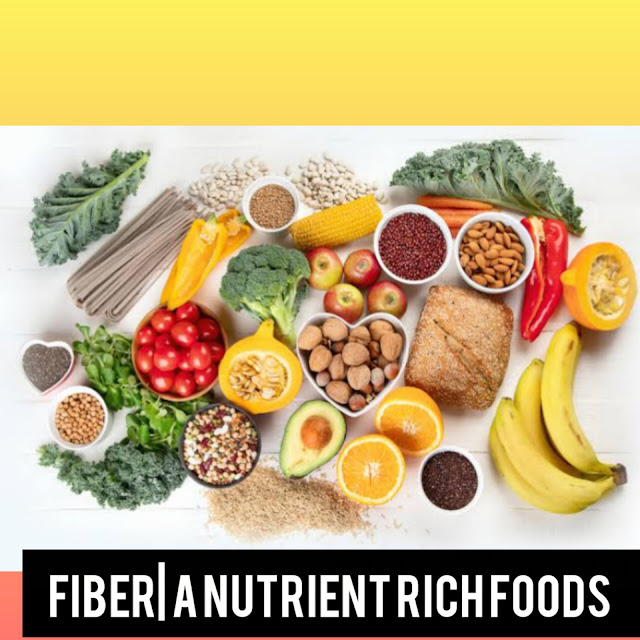Introduction:
Fiber is an important component of a healthy diet that is often overlooked. It is a type of carbohydrate that is found in plant-based foods, such as fruits, vegetables, whole grains, nuts, and seeds. Despite its essential role in maintaining good health, many people do not consume enough fiber in their diet. In this article, we will discuss the importance of fiber, its health benefits, how to increase fiber intake, and possible risks of consuming too much fiber.
What is Fiber?
Fiber is a type of carbohydrate that cannot be digested by the body. It is found in plant-based foods, including fruits, vegetables, whole grains, nuts, and seeds. There are two types of fiber: soluble and insoluble. Soluble fiber dissolves in water and forms a gel-like substance in the digestive tract. Insoluble fiber does not dissolve in water and adds bulk to the stool, promoting regular bowel movements.
How Fiber is Digested?
The human body lacks the enzymes needed to break down fiber, so it passes through the digestive system relatively intact. However, certain types of fiber can be fermented by the bacteria in the large intestine, producing short-chain fatty acids that provide energy to the body.
Health Benefits of Fiber:
There are many health benefits of fiber some of them are here:
Promotes digestive health: Fiber promotes regular bowel movements and prevents constipation. It also helps to prevent hemorrhoids and diverticulitis.
Lowers cholesterol levels: Soluble fiber can lower LDL (bad) cholesterol levels by binding to bile in the digestive tract, preventing it from being absorbed into the bloodstream.
Regulates blood sugar levels: Soluble fiber slows down the absorption of glucose, preventing blood sugar spikes and crashes.
Reduces the risk of heart disease: Fiber can help to lower blood pressure, reduce inflammation, and improve lipid profiles, all of which contribute to a decreased risk of heart disease.
Aids in weight loss: High-fiber foods are more filling, so they can help to reduce appetite and promote weight loss.
Decreases the risk of certain cancers: Fiber can reduce the risk of colon, breast, and prostate cancer.
Improves overall gut health: Fiber promotes the growth of beneficial bacteria in the gut, which can improve gut health and reduce the risk of gut-related diseases.
Top 10 fiber-rich foods:
Here are top 10 fiber rich foods:
Split peas: Split peas are one of the best sources of fiber, providing 16.3 grams per 100-gram serving.
Lentils: Lentils are another excellent source of fiber, with 7.9 grams per 100-gram serving.
Black beans: Black beans are a great source of both fiber and protein, with 8.7 grams of fiber per 100-gram serving.
Chickpeas: Chickpeas are also a good source of fiber and provide 7.6 grams per 100-gram serving.
Quinoa: Quinoa is a high-fiber whole grain that provides 2.8 grams of fiber per 100-gram serving.
Raspberries: Raspberries are a tasty source of fiber, providing 6.5 grams per 100-gram serving.
Artichokes: Artichokes are a high-fiber vegetable, with 8.6 grams of fiber per 100-gram serving.
Avocado: Avocado is a high-fiber fruit, providing 6.7 grams of fiber per 100-gram serving.
Almonds: Almonds are a good source of both fiber and protein, with 12.5 grams of fiber per 100-gram serving.
Chia seeds: Chia seeds are a superfood that is packed with fiber, providing 34.4 grams of fiber per 100-gram.
How to Increase Fiber Intake:
Increasing fiber intake is easy and can be achieved by making simple dietary changes. Here are some ways to increase fiber intake:
Whole grains: Choose whole grain bread, pasta, and cereals instead of refined grains.
Fruits and vegetables: Eat a variety of fruits and vegetables, including those with edible skins and seeds.
Legumes and beans: Incorporate legumes and beans into your meals, such as lentils, chickpeas, and black beans.
Nuts and seeds: Snack on nuts and seeds, such as almonds, walnuts, chia seeds, and flaxseeds.
Daily Fiber Intake:
The daily fiber intake varies based on age, gender, and activity level. The American Heart Association recommends a daily fiber intake of at least 25 grams for women and 38 grams for men. To calculate your recommended daily fiber intake, take your age in years and add five to it. For example, a 35-year-old woman should aim for a daily fiber intake of 40 grams.
Possible Risks of Consuming Too Much Fiber:
Consuming too much fiber can lead to gastrointestinal discomfort, such as bloating, gas, and diarrhea. Additionally, consuming too much fiber can interfere with nutrient absorption, particularly for minerals such as iron, zinc, and calcium. It is also important to drink plenty of water when consuming a high-fiber diet to avoid dehydration.
Conclusion:
In conclusion, fiber is an essential nutrient that provides numerous health benefits. Consuming a diet rich in fiber can help to promote digestive health, lower cholesterol levels, regulate blood sugar levels, reduce the risk of heart disease and certain cancers, aid in weight loss, and improve overall gut health. To increase your fiber intake, incorporate whole grains, fruits and vegetables, legumes and beans, and nuts and seeds into your diet. Be sure to drink plenty of water and consult with a healthcare professional before making any significant dietary changes.




0 Comments